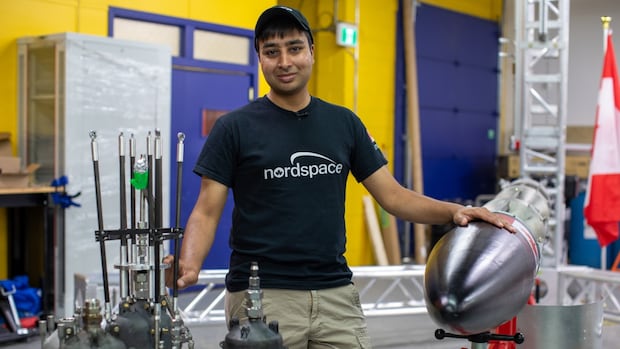On September 29, 1962, Canada’s Alouette I satellite was launched using an American rocket from the Vandenberg Air Force Base in California. This event marked Canada as the third country globally, following the former Soviet Union and the United States, to independently design and construct its satellite.
Since then, Canada has actively participated in the space industry, creating significant contributions such as the Canadarm for deploying satellites from the space shuttle and the Canadarm 2 for constructing the International Space Station. Additionally, Canadian technology has been utilized on rovers exploring Mars and satellites journeying to distant asteroids.
Despite these achievements, Canada has never launched rockets into orbit from its own soil. Two companies, NordSpace and Reaction Dynamics, are now working towards changing this narrative. They believe that establishing domestic rocket launch capabilities will not only generate employment opportunities but also enhance Canada’s sovereignty during a time when the country is seeking greater independence.
NordSpace is gearing up to conduct a suborbital launch of its six-meter Taiga rocket from Newfoundland, with plans to launch the larger Tundra rocket, standing at 26 meters tall, into orbit by 2027. This rocket will have the capacity to carry up to 500 kg into space.
Reaction Dynamics, led by Bashar Elzein, has aligned with Maritime Launch Services in Nova Scotia, Canada’s first commercial spaceport, to facilitate its rocket launch ambitions. Emphasizing Canadian production, Elzein aims to manufacture over 90% of the rocket components in-house at their factory.
Both companies view the development of the rocket launch industry not only as a matter of sovereignty but also as a means to foster a burgeoning space economy. Elzein projects the creation of 600 to 1,000 jobs through launching Canadian satellites.
Despite being competitors, Elzein believes that the presence of multiple companies vying for launch capabilities will strengthen Canada’s position in the space sector. MLS founder Steve Matier echoes this sentiment, emphasizing the importance of self-reliance in launching Canadian satellites into orbit.
With the shift towards domestic rocket launches, the focus is also on nurturing talent within Canada. Programs like Launch Canada have been instrumental in engaging Canadian students in rocketry competitions, fostering a growing interest in space technology within the country.
Oleg Khalimonov, a rocket engineer from Concordia University, led a team in launching the most powerful student-built rocket, named Chicabish, from Canadian soil. The emphasis on keeping talent at home is a shared sentiment among industry leaders who recognize the potential for Canada to become a global hub for space research.
As Canada embarks on establishing its rocket launch capabilities, there is a sense of national pride and unity in supporting homegrown initiatives. The growing enthusiasm for investing in Canadian-built technology reflects a shift towards prioritizing domestic innovation and self-sufficiency in the space industry.



